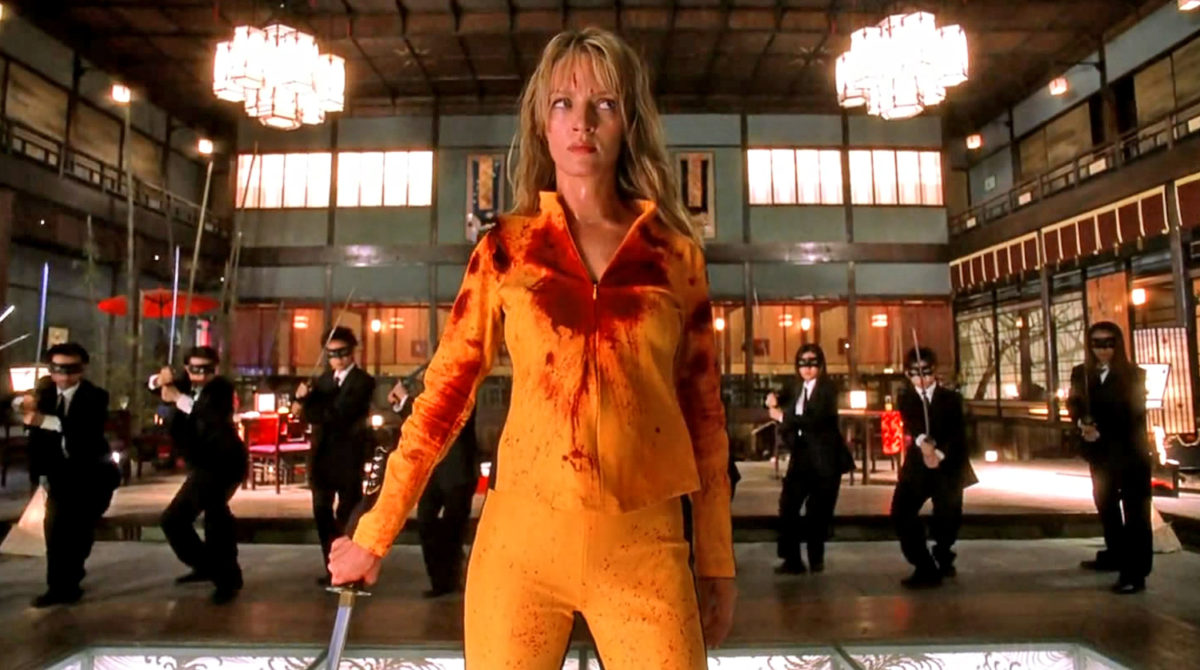‘Once Upon a Time in Hollywood’
Merely uttering the name Quentin Tarantino in most film circles has cinephiles running for the corners, checking their cards and making sure that their credentials are in order. All of this takes place even before his oeuvre can be discussed, palms glistening with sweat as conversation in hushed, hurried voices about his influences go on.
“Once Upon a Time . . . in Hollywood” is poised to hit U.S. and Canadian theaters this weekend and Phoenix Film Festival critic Ben Cahlamer is celebrating Tarantino’s mark on film history with his ordering of Tarantino’s classics.
Note that for the purposes of this list, “Kill Bill: Volume 1” and “Volume 2” are being treated as separate films, though the argument could be made that they are one film. We are intentionally omitting “Once Upon a Time . . . in Hollywood” because it is a new release this weekend.
9. “Death Proof” (2007, Dimension Films) Part of the double feature, “Grindhouse” along with Robert Rodriguez’s “Planet Terror,” “Death Proof” is a tale of a stunt man (Kurt Russell) in his ‘death proof’ car. The film pays homage to the classic slasher, exploitation and muscle car films of the 1970s. I’ve only seen the film once and it has all of the hallmark Tarantino riffs, but in paying homage, it felt hyper-realistic and didn’t completely work for me.
8. “Kill Bill: Volume 2” (2004, Miramax) The second part of “The Bride” is a beautiful film in that it has the most character development of the two. But, because it is a separate part from the first volume, Tarantino’s homage to Martial Arts and Spaghetti Westerns doesn’t work as well as the first part. Bill’s (David Carradine)speech at the end of the film is heartfelt, but Uma Thurman’s empathetic reaction is even more on point.
7. “Reservoir Dogs” (1992, Miramax) I only saw Tarantino’s first film recently, but the heist story, the non-linear time line and the cast really drive this film in such a unique way. As I sit here thinking about it, “Reservoir Dogs” is what would have happened had all the villains from Joseph Sergeant’s “The Taking of Pelham One, Two, Three” escaped, but became cornered after the event goes badly.
6. “Django Unchained” (2012, The Weinstein Company) Though it is a revision of the classic Italian film, “Django,” Tarantino’s stylized version unleashes Django Freeman (Jamie Foxx) in an ultraviolent story of revenge in the Deep South. Tarantino would go on to win several awards for his screenplay, while the film would be nominated for Best Picture. Christoph Waltz won Best Supporting Actor for his role as Dr. King Schultz, a German dentist-turned bounty hunter. Leonardo DiCaprio was a riot as Monsieur Calvin J. Candle.
5. “Pulp Fiction” (1994, Miramax) This was the film that put Tarantino on mainstream audience’s radar and was the start of John Travolta’s second renaissance. I actually caught this film on my university’s movie channel long after it was out of theaters, but I knew it was all the rage going into the 1995 Oscar’s telecast. The violence, the story telling, the attention to detail that Tarantino gave this black comedy caper is still fresh in my mind.
4. “The Hateful Eight” (2015, The Weinstein Company) I managed to see this twice in theaters, once on the 70MM Roadshow release and again on digital. My preference is for the Roadshow version because it creates a classic atmosphere for such a violent affair. What makes this movie sing for me isn’t just the cast; this is perhaps Tarantino’s strongest cast, only bested by one other of his films. But, the fact that the film is shot on two main locations (the stage coach and the lodge) and the tension that the limited locations provides, makes for a great drama.
3. “Kill Bill: Volume 1” (2003, Miramax) Originally intended to be released as a four-hour film, Uma Thurman proves, once again, why she is a stunning actor. The physicality of what she had to endure, in terms of choreographed fights and the savage beating she took makes this a masterpiece. But, it also keeps Bill in the shadows, something that adds to the homage to Martial Arts films that “Kill Bill” pays tribute to. The majority of the action is played out in this first volume, leaving the dramatic story telling for the second volume. Watched together, it makes for a single, excellent film, but “Kill Bill” suffers from the same problem as the “Star Trek: The Next Generation” third season cliffhanger “The Best of Both Worlds”: it starts off so spectacularly that the pent up energy really has nowhere to go in the second volume.
2. “Inglorious Basterds” (2009, The Weinstein Company) Like many of Tarantino’s films, I hadn’t had the chance to watch the films he pays homage to until after I’d seen the Tarantino film. That’s because I have faith in his ability to create something wholly original and he succeeds in yet another black comedy; featuring Brad Pitt, Christoph Waltz, Michael Fassbender, Diane Kruger, Daniel Bruhl and Melanie Laurent. The film is exceptionally violent, but the story it tells is one of understood retribution. Waltz would go on to win Best Supporting Actor at the 2010 Oscar telecast, along with the Cannes Best Actor Award, the BAFTA, SAG, Critics’ Choice and the Golden Globe.
1. “Jackie Brown” (1997, Miramax) The only script that Tarantino adapted from another work, Elmore Leonard’s “Rum Punch,” this homage to Blaxploitation films has an eclectic cast, a dynamite soundtrack and a beautiful romance. Pam Grier absolutely steals the show as the titular character while Samuel L. Jackson, though not as strong as his performance in “Pulp Fiction” really is a lot of fun to watch. The supporting cast, namely Robert Forster as a bondsman, Max Cherry (a role he was destined to play) and Michael Keaton as Ray Nicolette, a loose cannon of an ATF agent really bind the whole film together. The whole affair is as laid back as Tarantino is and he stamps his inimitable style on Leonard’s novel.
Before you go, did you know that Tarantino was an uncredited screenwriter on both “Crimson Tide” (1995) and “The Rock” (1996)?



















